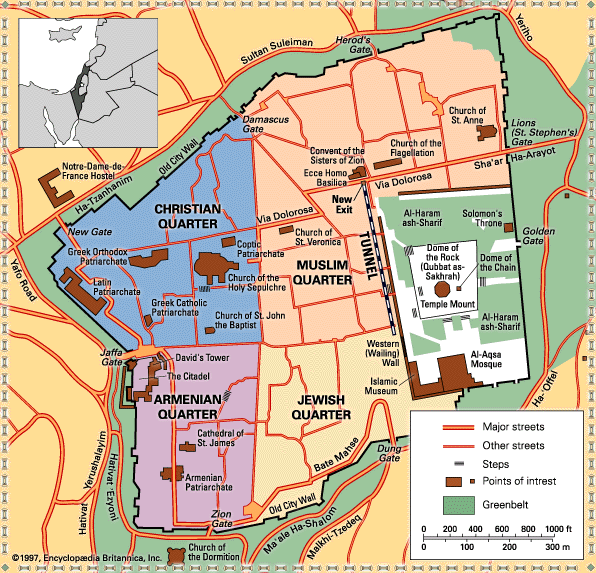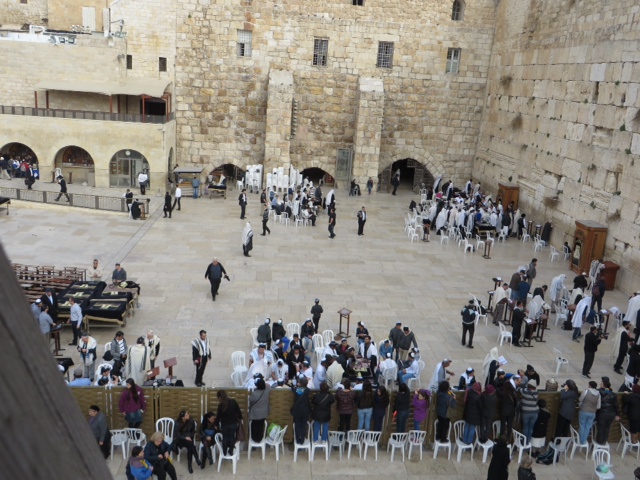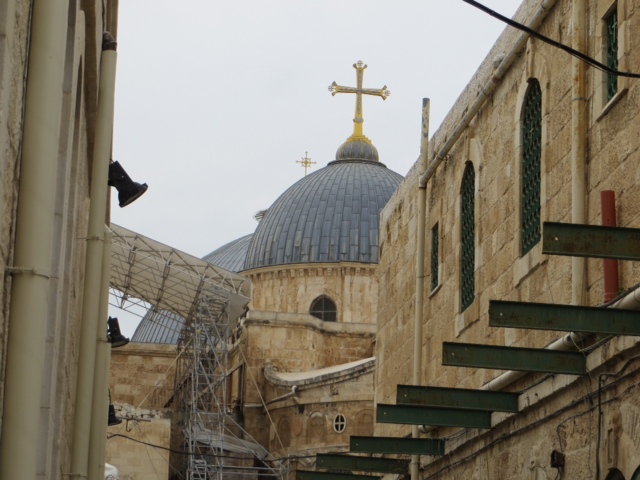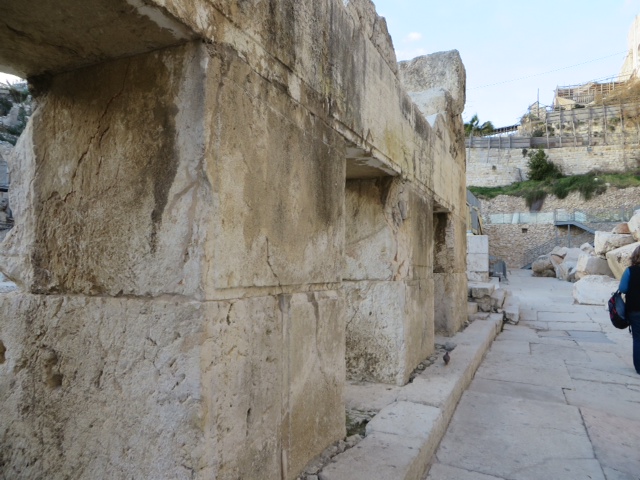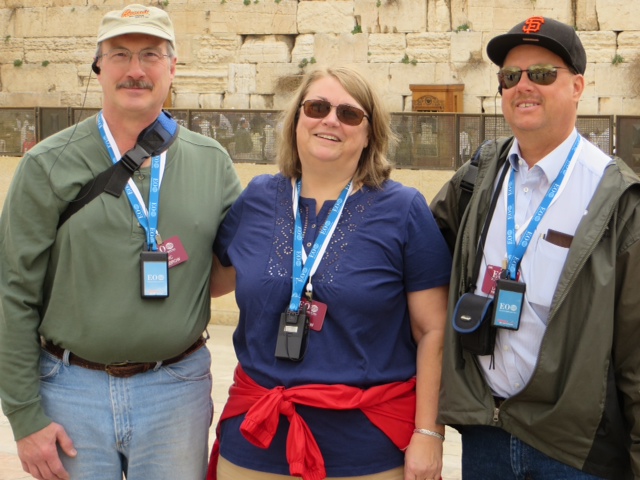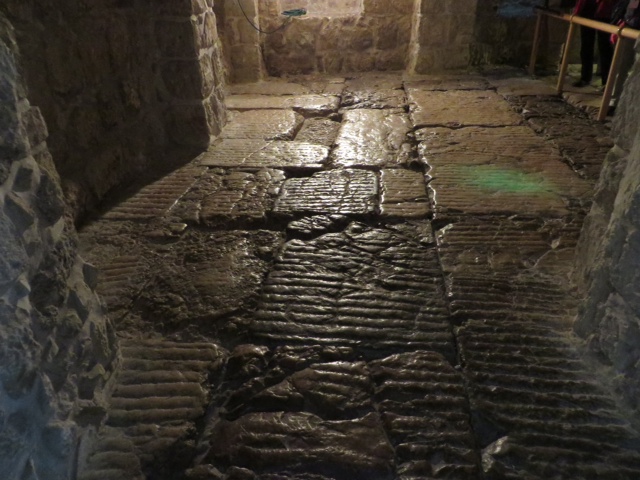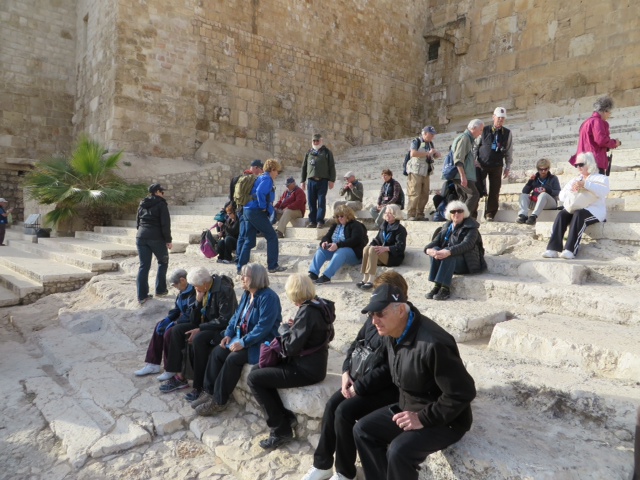Pilgrimage
Trip Blog
January 15
Pastor Tim has embarked on a special venture--the trip of a lifetime to visit the Holy Land. We will be updating this page with daily pictures from his journey. Today, January 15, and we'll start off at the airport in Great Falls. You can also keep up with the trip through a blog managed by the tour group leaders. Click on the highlighted text above. It is up and running. The password is--onourway.
Pilgrimage
Trip Blog
January 15
Pastor Tim has embarked on a special venture--the trip of a lifetime to visit the Holy Land. We will be updating this page with daily pictures from his journey. Today, January 15, and we'll start off at the airport in Great Falls. You can also keep up with the trip through a blog managed by the tour group leaders. Click on the highlighted text above. It is up and running. The password is--onourway.
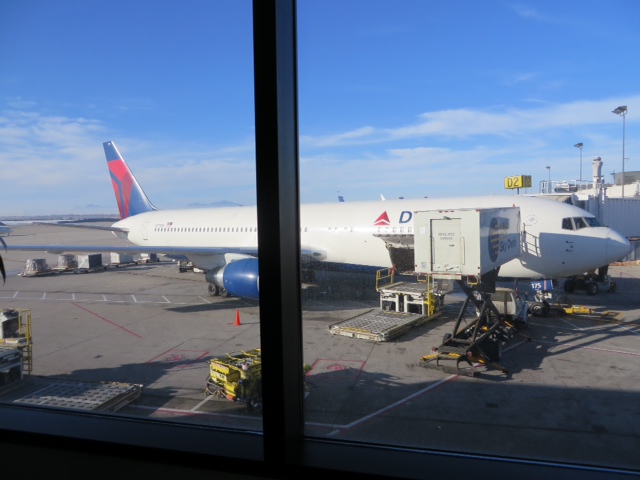
Departure
January 16
The view hasn't changed much--just the location. Tim is now in Paris, and getting ready to board for the next leg--which takes him to Amman, Jordan.
Waiting to Board in Paris
The Trip--Approximately 7,650 miles
After a safe trip and arrival, here are a couple views from Tim's room in Amman. In the second you can see George who will be Tim's roommate. He is from Missoula and a friend of Fred and Mary Collins.
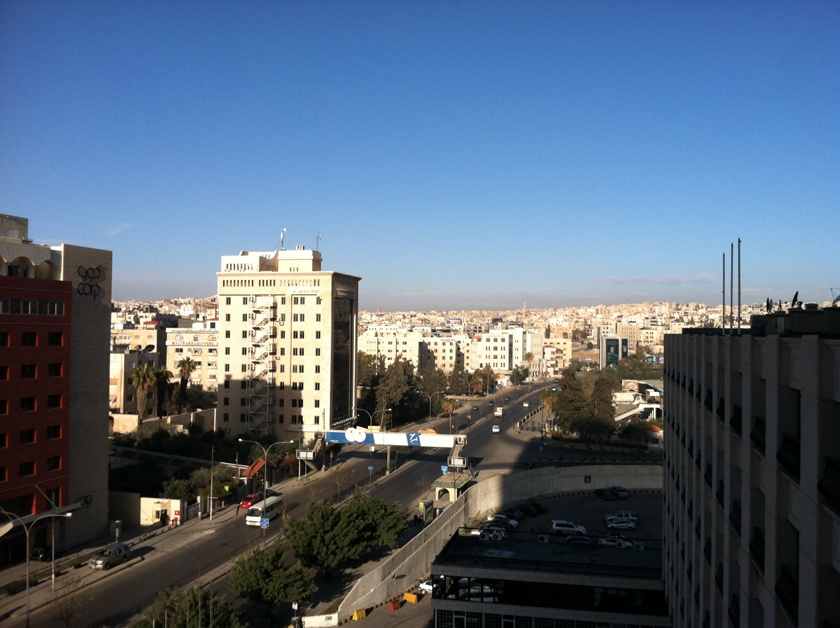
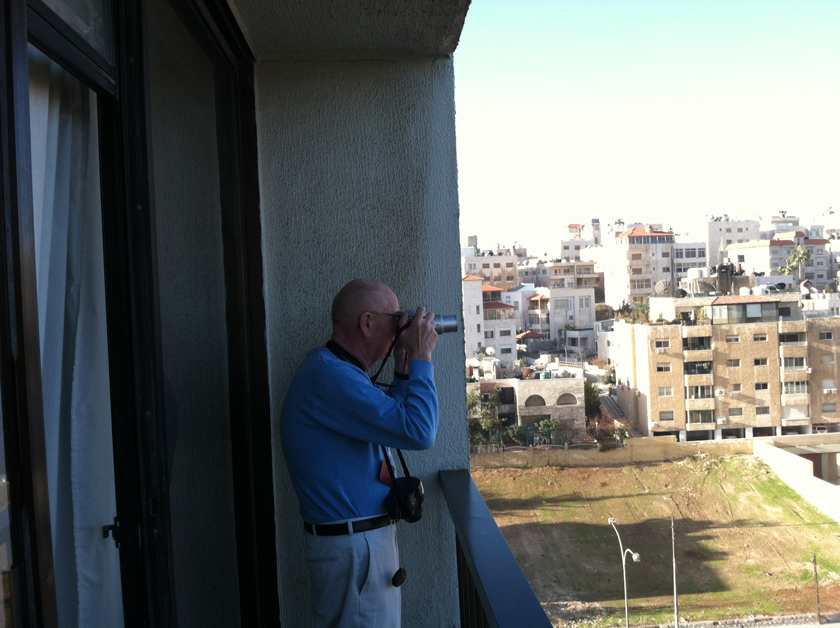
January 17
Today, the visit included stops at Mt. Nebo, the site of Herod's prison and the remains of a Crusaders' fortress. In Tim's words, "Mount Nebo, where Moses got to see the Promised Land. (You can see the haze barred our view.) As we looked over the Jordan, someone read the story from Deuteronomy 34."
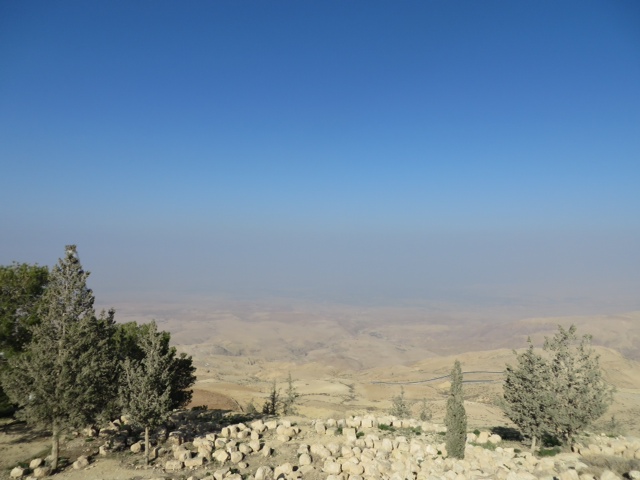
View from Mt. Nebo toward the Promised Land
The second picture today is the site of Herod's prison -- most likely, this is where John the Baptist was beheaded.
Prison Hill
This third picture is of Castle Mount Royal. It was built by the Crusaders about 1115 in a location that controlled the commerce of the region. The Crusaders were able to maintain their control at this location only until 1189 when it was captured by Saladin. Most of the original fortress is gone, and what remains was rebuilt in the 14th century by the Mamelukes.
Castle Mont Royal
January 19
After a church service, Tim and the group visited Petra, the most famous archeological site in Jordan. This amazing city is carved right into the sandstone rock at the location. The text for the church service was "Enter through the narrow gate for the gate is wide and the road is easy that leads to destruction and there are many who take it. But the gate s narrow and the road is hard that leads to life and there are few who find it." -- Matthew 7.13-14 The entry into Petra is called the Siq, and as this picture shows, the text was remarkably appropriate.
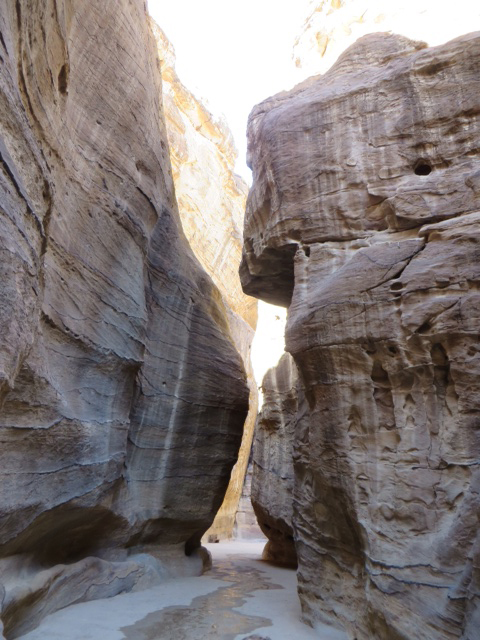
The Siq
About the first building one encounters after passing through the Siq is the Treasury which was a setting in one of the Indiana Jones movies. It was a mausoleum for a very wealthy family.
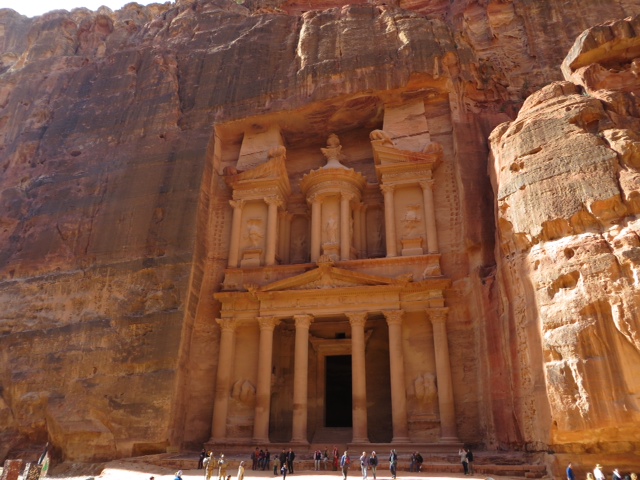
The Treasury
And finally, in Tim’s words, “The last picture is from the back of a camel. I have a new appreciation for the three wise men who came to visit the baby Jesus. They traveled thousands of miles by camel; I only rode a few hundred yards and was still saddle sore. It was still a lot of fun.”
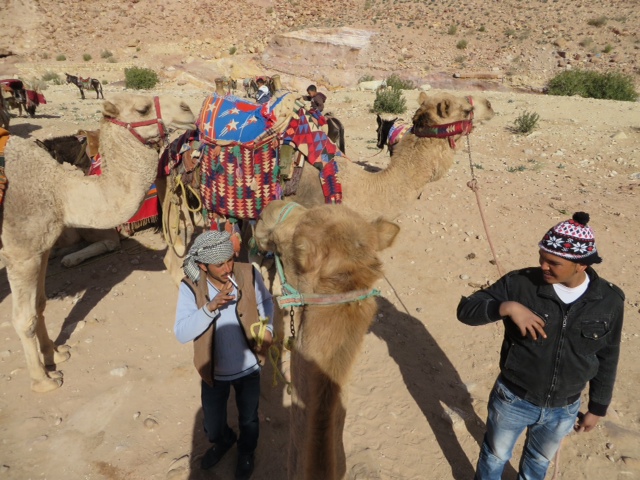
Looking at the World on the Back of a Camel
If you want to discover more about Petra, you can go to the official web site http://visitpetra.jo/Default.aspx.
January 21
One of the stops on the 21st was the ancient Roman city of Jerash which dates from the about the second century AD. Tim said, "I really enjoyed it; I liked it so much I took 200 pictures. Of the three I include here, you can see the theater and the temple of Artemis. The road was well preserved and you could see ruts worn by chariot wheels. This was my favorite sight in Jordan." As you look at the picture on the left, you can see a man who was part of a bagpipe presentation!
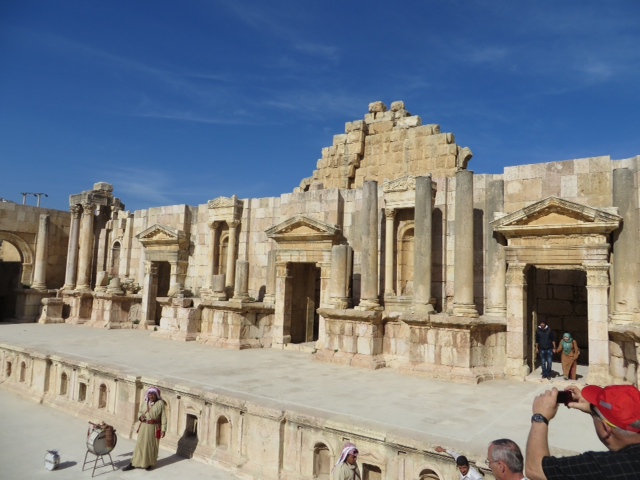
The Theater at Jerash
The Temple of Artemis
If you're interested in more about this city, there are a few web sites that tell more, one of the better ones is at http://almashriq.hiof.no/jordan/900/930/jerash/
After the stop at Jerash, the tour continued to the border. Tim says, "We crossed the border into Israel without incident. One is very aware of borders in this part of the world." The met up with the rest of the tour for the visit to Israel.
January 22
Tim tells us, "Today was our first day in Israel. We went to so many places it is hard to remember all of them. Just when I think I have seen the most fabulous interesting, amazing treasure, there is something more. The first picture is of Eric and Pam at the Mount of the Beatitudes. The second picture is on a boat ride we took on the Sea of Galilee. I was asked to give the devotion, and reflected on the last five verses in Mark 4, describing Jesus as The Lord of the Storm."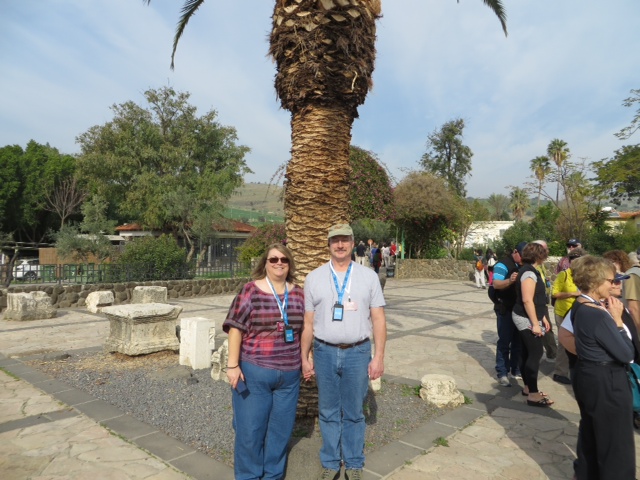
Pam and Eric
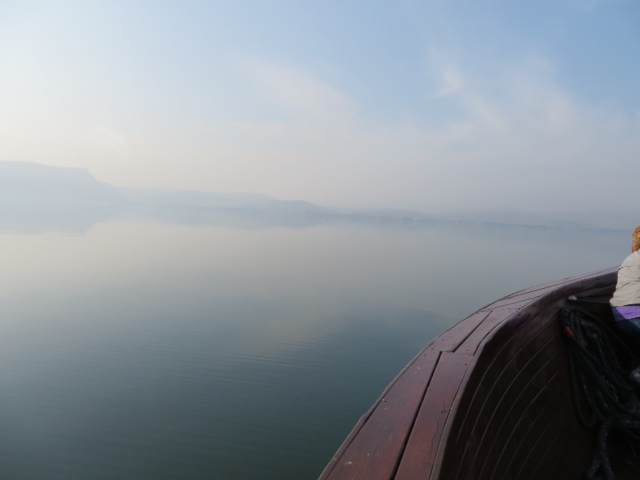
The Sea of Galilee
"The third picture features a stone excavated from Migdol, which was part of a first century synagogue. The marks on the stone and other artifacts date this site to the time of Jesus. The site was previously unknown until work began on a planned hotel. The wheels depict Elijah's final journey in a chariot of fire." Tomorrow's wake-up call is 6:00 a.m. And the adventure continues.
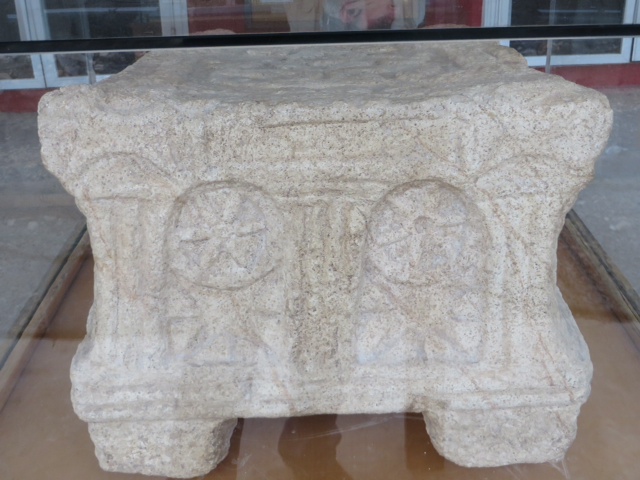
Piece from 1st Century Synagogue
January 23
Tim provided some nice commentary for today's pictures, so in his words: "The first picture is from our first stop of the day, which was at Capernaum. Excavations have revealed a synagogue and a number of houses, one of which is reputed to have been the home of Peter. The menorah was one of the symbols used to decorate the synagogue and is contemporary with the time of Christ. The guide told us that the Menorah was almost chosen as the symbol for the nation of Israel in 1948.
Capernaum Excavation
"The second picture shows Eric and Pam being guided through the ruins of Chorazin by our own "expert archeologist." (Actually he is my roommate George, a friend of Fred and Mary Collins.)
Pam and Eric at the Ruins of Chorazin
"The third picture is of Israel's northeast border with Syria. The white buildings in the background belong to the UN peacekeeping forces. We were only forty miles away from Damascus, but getting there from here is impossible as Syria and Israel have no diplomatic relations."
Looking into Syria
January 24
"Here in Israel, the sabbath began about twenty minutes ago when the sun set. Orthodox Jews who consider cooking as a violation of the fourth commandment have joined us in the motel. Apparently this is a common practice; one elevator is even designated as a Shabbat elevator which means it stops at every floor. (Apparently pushing to number of the floor you want to go to is considered work, too.)
"We went to a lot of places today -- by far my favorite was Tel-Meggido, (for more information, go to https://sites.google.com/site/megiddoexpedition/) known by its more common provenance as the site of Armageddon. For a place where so much blood had been spilled over the centuries (this was where King Josiah was killed), the place was remarkably peaceful. The weather was perfect, as you can see.
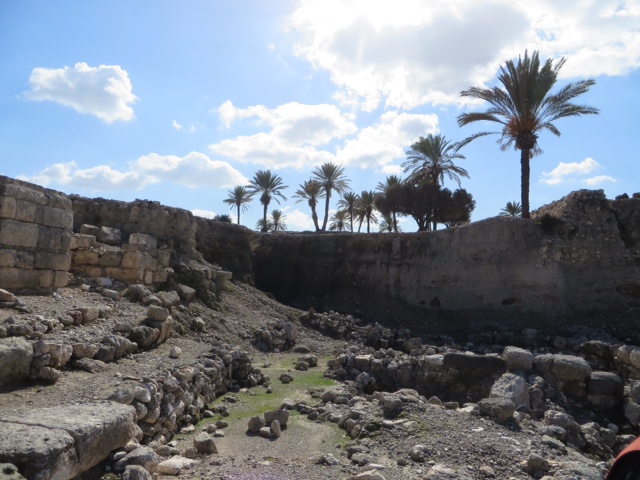
Tel-Meggido
Next we went to Nazareth, to the supposed site of Gabriel's annunciation to Mary. When I get back, I'll offer extended commentary on what I think about certain locations here in the holy land, some are justified by historical and archeological evidence, others are mostly guesses.
"There was a riot in Nazareth -- actually just a demonstration which probably ended as soon as the television cameras were turned off. You can see the police in the picture, directing traffic.
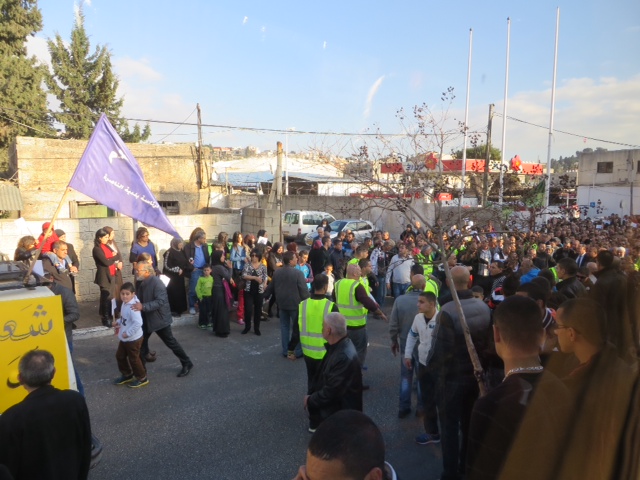
Nazareth Demonstration
"The last picture is of a place called the Precipice, which is perhaps where the Nazarean crowds took Jesus and attempted to throw him to his death (you can read about it in Luke 4.). The hill in the center is Mount Tabor.
"Tomorrow we go on to Jerusalem."
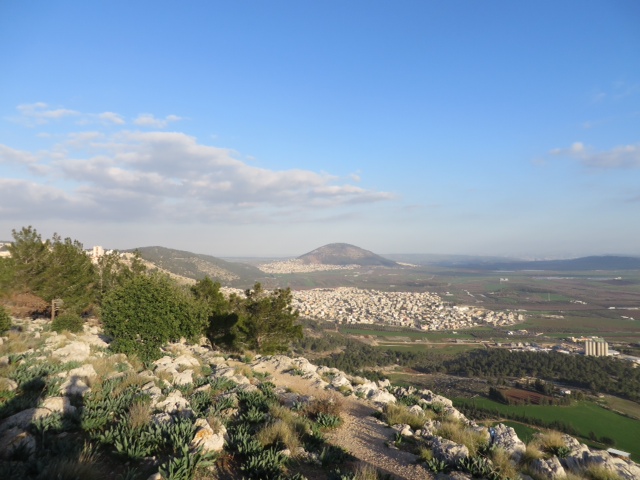
Mt. Tabor from the Precipice
January 25
With just a little editing, Tim get to write today's commentary too. "The first two pictures are from Caesarea -- not to be confused with Caesarea Philippi. Caesarea was a town built by Herod the Great (he might have been a lousy human being but he was a brilliant engineer -- did you know he invented concrete?). Caesarea was mostly a secular city -- as Tel Aviv is today, but it is of great importance in Scripture. This is where Paul made his defense before Festus and Agrippa in Acts 26. It is also where Cornelius was stationed. You can read about him in Acts 10.
"The first picture is of the Mediterranean Sea, the next one is of Pam and Eric on the beach. I hear it is supposed to snow in Great Falls tomorrow. Maybe you can look at this picture and feel warm!
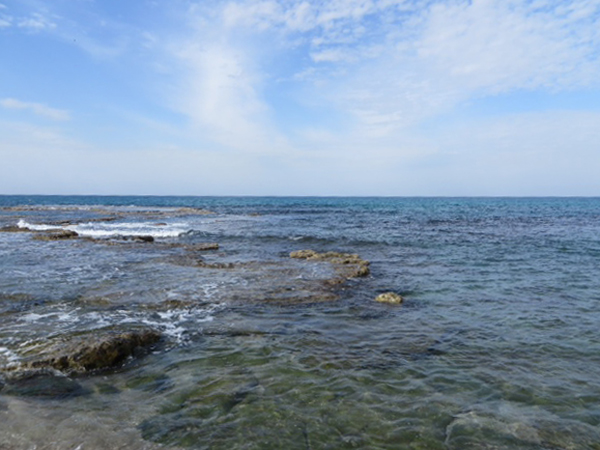
The Mediterranean Sea
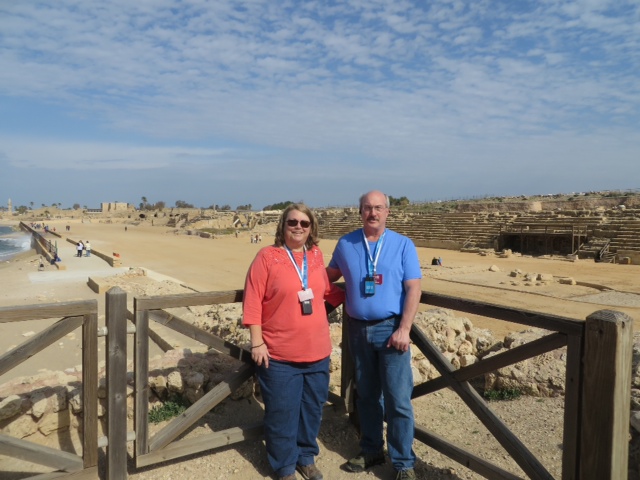
Pam and Eric at Caesarea
"We got to Jerusalem about an hour before sundown, and went into Bethlehem. As you might remember from the news, Bethlehem was closed to outsiders until recently; in order to get in and out of the city you have to pass through a gate in the wall. We were told to have our passports ready, but we got in and out without incident. On leaving Bethlehem for Jerusalem, we watched the Israeli guards search several cars. As you can see from the pictures, Bethlehem is a seedy, violent place. One person in our group wanted to walk down the street, but they wouldn't let her go without escort.
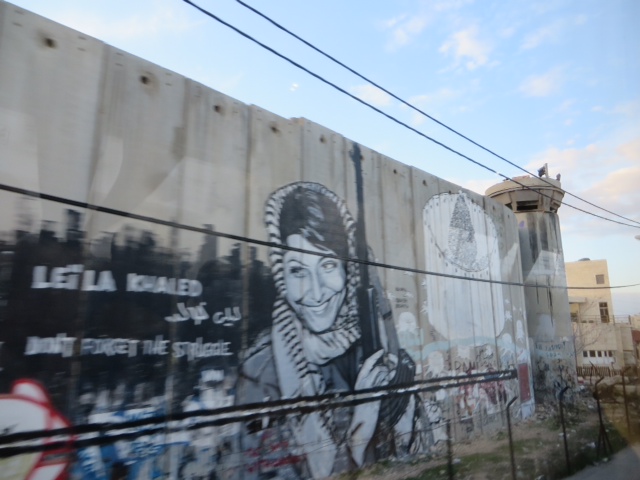
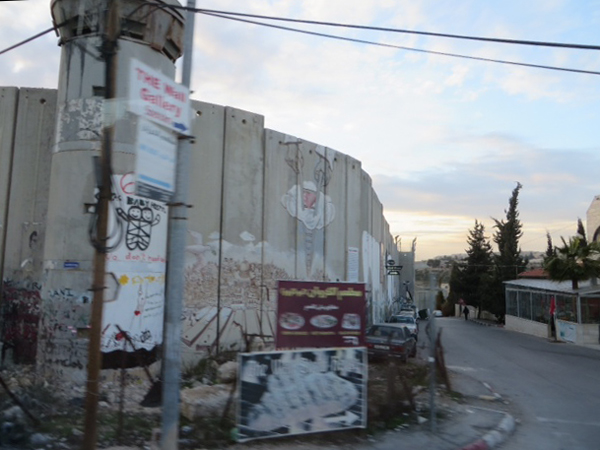
Two Views of Bethlehem
"Jerusalem, by contrast, was quite beautiful. As we stood on the overlook, someone read from the 122 Psalm. It was a powerful spiritual experience for me. Tomorrow's wake up call is for six am. We head for Masada and the Dead Sea. I am going to send this off, take a shower, and get some sleep. Pray tonight for the peace of Jerusalem. As my dad would always say when he ended a letter: Peace!"
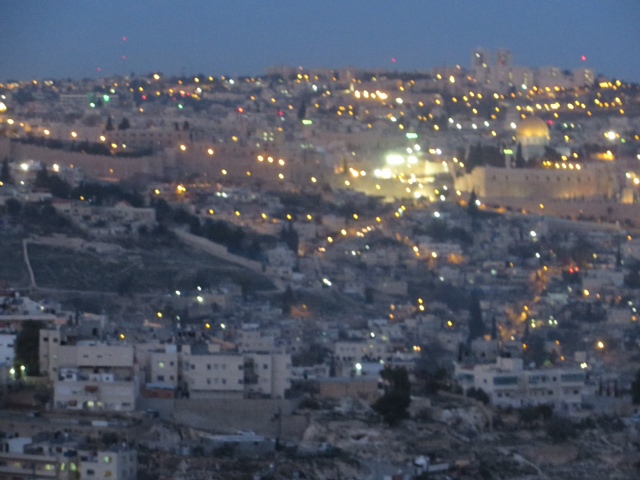
Jerusalem at Dusk
January 26
"Today's journey took us along the road of the Good Samaritan, from Jerusalem to Jericho. Jerusalem's elevation is 3000 feet (not quite as high as Great Falls) while Jericho holds the distinction for being the lowest (as well as the oldest) city in the world. Its elevation is 1300 feet below sea level. The first two pictures are from the Jewish fortress of Massada. We had to take a cable car to reach the top. Massada was built by Herod the Great but is most famous as the place where 96 Jewish Zealots held out against a legion of The Roman army. They were defeated only when the Romans built a ramp to gain access to the fort." (You can take a virtual tour of Masada by going to http://www.masada.org.il/index.php?q=en.)
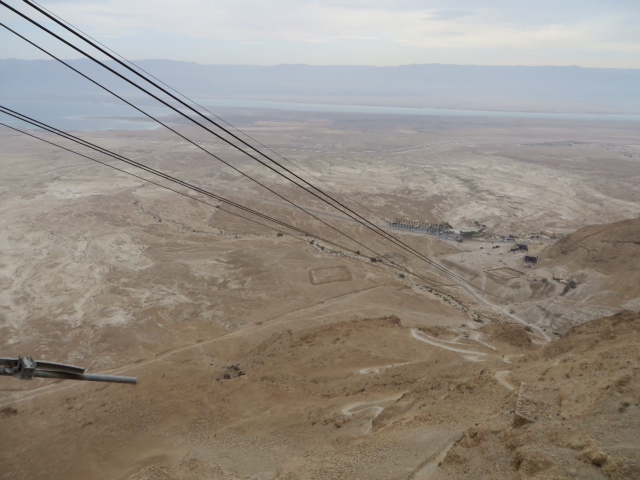
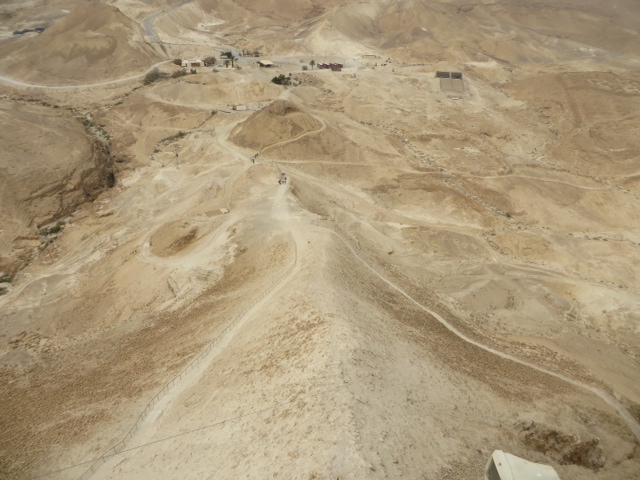
Looking Down from Masada
"After Massada, we went to Jericho. You can see why the Bible refers to Jericho as the city of palms. It is a veritable oasis in the midst if a vast desert. Like Bethlehem, Jericho is a city under Palestinian control. Archeologists have unearthed a watchtower which dates back to 8000 BC. (If you want, let me know and I can send you a picture of it.)
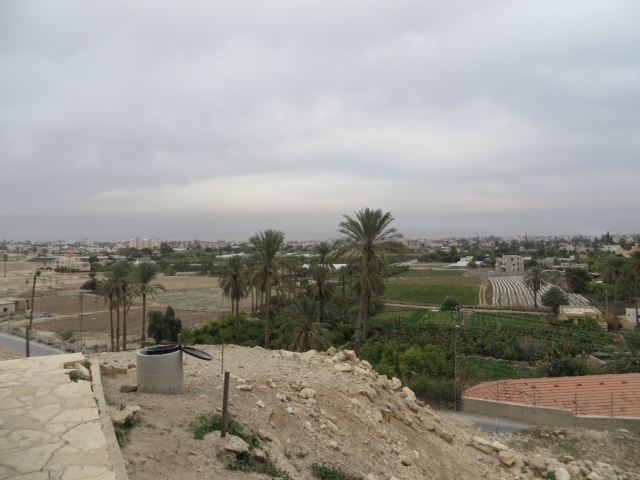
Jericho
"The last photo is of Cave 4 in Qumram. Most of the Dead Sea scrolls came out of this cave. You can see why it and the remains of the Essene community which copied the scrolls and hid them went undetected for two thousand years." (For more information, you may go to http://mosaic.lk.net/g-qumran.html.)
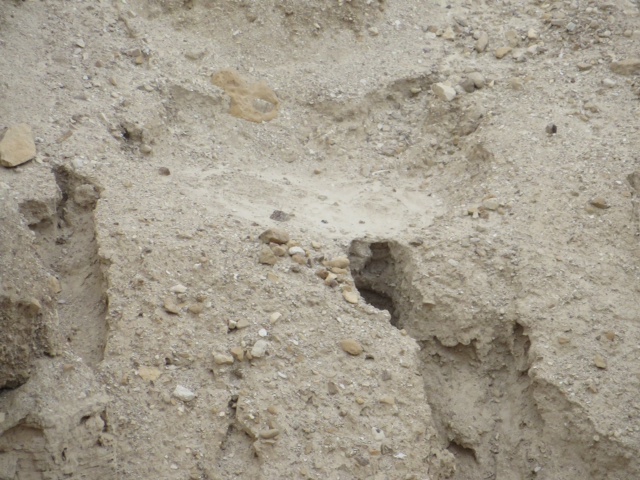
Cave Four
January 27
"We spent the whole day today in the Old City of Jerusalem. If I could think of one way to describe the experience, it would be 'exercises in long division.' There were dividing points, boundaries, walls everywhere. Some I understood and anticipated: Jew divided against Muslim, Orthodox Jews divided from non-Orthodox Jews. But other divisions were surprising. I should have anticipated them, but I did not. The first interesting division was male and female. I had first hand experience in this means of division because I started down the wrong ramp on my way to the Western Wall. I went down on the side that was for the women! The error was pointed out to me before I got too far.
Map of Old Jerusalem
To the left below you can see the dividing wall. Several bar-mitzvahs were going on. Only the men are allowed to handle the Torah scrolls, the women have to stand on chairs to look over the dividing wall.
On the right is the Church of the Holy Seplucher. There, too, an unexpected division was experienced. The ritual duties and prayers were divided by very different manifestations of Christianity. First the Coptic (Egyptian) priest had to wave his incense and say his prayers. He was followed by the Armenian Priest, the Russian Orthodox Priest, and the Greek Orthodox Priest. So pronounced are the divisions that our tour guide mentioned he saw one priest pull a knife on another priest when he was leading a tour. There was as heavy a police presence here as there was on the Temple Mount.
Bar Mitsvahs and a Wall of Separation
The Church of the Holy Sepulcher
"Another division that was apparent here (and really it has been throughout the trip) is between religion and faith. Religion is apparent everywhere and anywhere you look around here: whether it is manifest in Islam, Judaism and Christianity. People are highly religious about their diet, their dress, their outward displays of religion. Much time and energy gets devoted to the religious enterprise. But what about faith? I thought of this as I went by the sinks at the Western Wall (so the Jews can wash before they pray) and the sinks by the Temple Mount. Muslims and Jews believe very differently. But they are very devout in their commitment to matters of ritual and religion.
To the right below is a recent excavation of Jerusalem's colonnade -- their main street. This runs along the Western Wall and dates from Herod. To your right are the steps leading to the temple. The niches to your left would have been where the money changers plied their trade. It is amazing to think of Jesus here during Holy Week, taking the tables of those who profited off of religion and turning them upside down.
Touring Robinson's Arch Area along Herodian Street
Our Sunrise Representatives
To the left below is a picture of excavated ruins in what archeologists think was Herod's Praeorium. These stones have been authenticated as being from Christ's time. This would have been the road Jesus walked on his way to the cross. On the right is a picture of our group on the steps that would have led to the temple. This site has been excavated in the last 20 years. The steps would have been where Jesus (and other rabbis) taught.
Herod's Praeorium
The Teaching Steps
The Dome of the Rock (the Site of Abraham's Sacrifice)
Eric and Pam on Tour
Soldiers on Break
The Golden Menorah
This is a view of Mount of Olives and a three thousand year old cemetery from newly excavated temple steps. This would have been a view Jesus would have been familiar with when he called the religious leaders "white-washed tombs."
The Mount of Olives
January 28
"Rain (showers, actually) scuttled our plans to walk from the Mount of Olives down to the wall of the Old City. We will do that tomorrow. Instead, we visited three museums: the Israel Museum, the Shrine of the Book (where some of the Dead Sea scrolls are kept), and the Yad Vesham--Israel's museum of the holocaust. The first two pictures show the outside of the Dead Sea Scroll museum. (They don't allow photography inside, as the scrolls are so fragile and sensitive to artificial light.). The outside architecture tells a story -- the white entrance with the black wall represents the stark theology of the Essene community, while the roof is shaped liked the lid to the jars where the scrolls were kept for 2000 years.
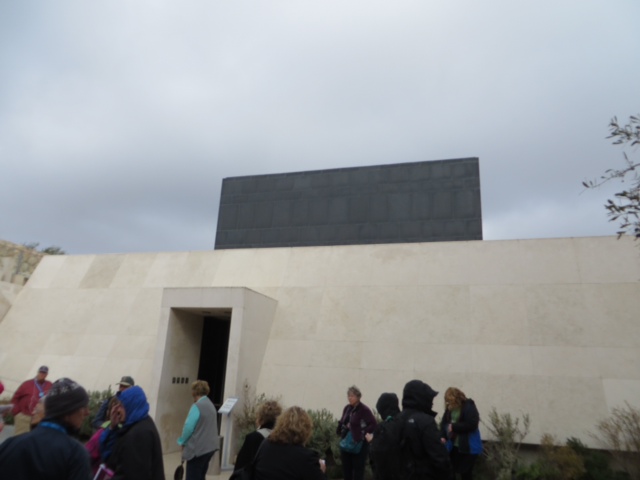
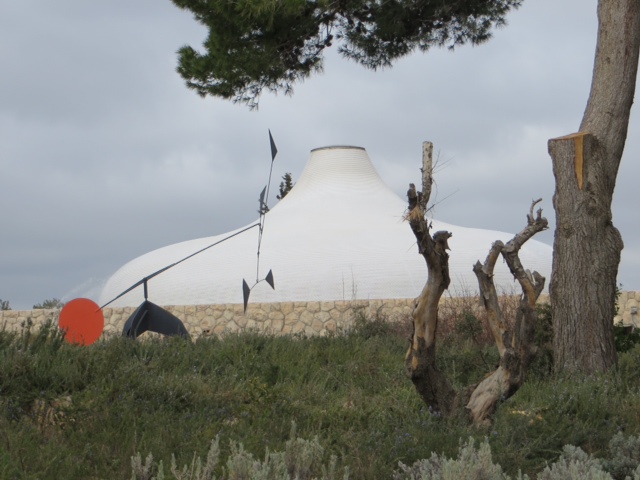
The Dead Sea Scrolls Museum
"Pictures weren't allowed at the Yad Vesham museum either -- out of respect for the holocaust victims. It was a powerful experience to stand under the slogan that marked the entrance to Auschwitz (I can't remember the exact German but it reads 'Work Makes You Free') and consider all of those who perished as a result of Hitler's 'Final Solution.'

"The last stop was at the Israel museum. We only had an hour and I could have spent all day in the archeological section alone. There are treasures here I had read about for years and today I found myself looking at the actual objects. I won't bore you with the things that really fascinated me; I'll just show one picture of the a stone that was excavated at Caesarea. It lists the names of Tiberias the Emperor, Justinias the Procurator and Pontius Pilate, the Governor of Judea and it dates from the time of Christ.
"My last picture is of the sunset in Jerusalem, reminding me that while the day here is ending it is for all of you just getting under way. I think of the sun setting on this great experience too. Only two more days are left. We leave for the airport after dinner Thursday; our flight leaves from Tel Aviv shortly after midnight."
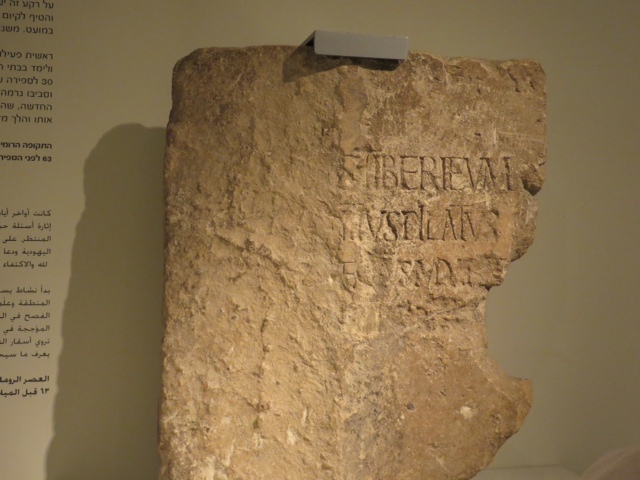
Stone from the Israel Museum
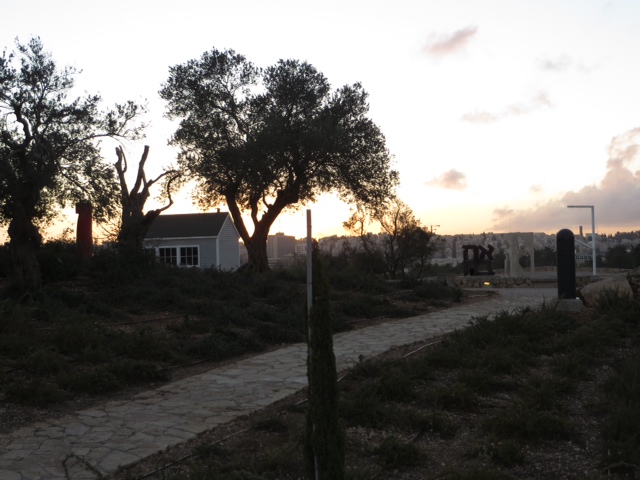
Sunset over Jerusalem
January 29
"The way I figure it, this will be the last chance I have to make my report from Jerusalem. Although we will tour most of the day tomorrow, there won't be much time between when we get back to the motel and then board the bus for Tel Aviv. Our flight leaves about 1:00 am Friday morning, and I should be back in Great Falls (if all the flights are on time) around 5:30 Friday afternoon (which will be 2:30 Saturday morning in Israel. The first picture is of the three of us Sunrisers on the Mount of Olives. If you look carefully, you can see the walls to the city of Jerusalem behind us. As you can see, the day was perfect. The second picture is of an olive tree in the Garden of Gethsemane. Although the trunk is obscured by the fence, it is very large and very old. And it could be that this tree was in the garden the night Jesus was betrayed. Some things they tell you here, you quickly learn to discount as the product of pious but fanciful imaginations. I don't think this is the case here; strong evidence suggests the tree could be 2000 years old.
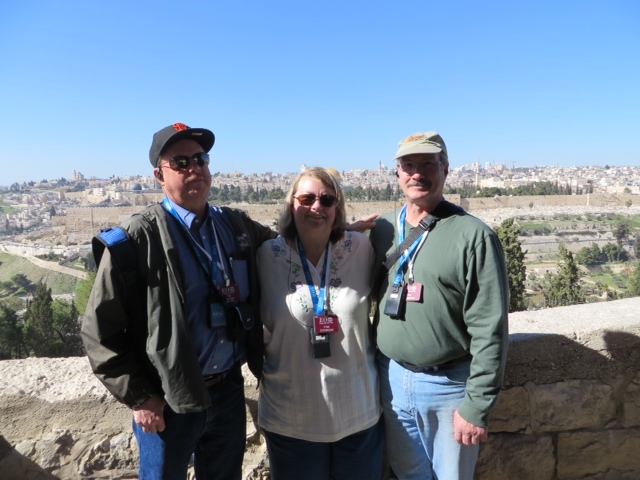
The Crew
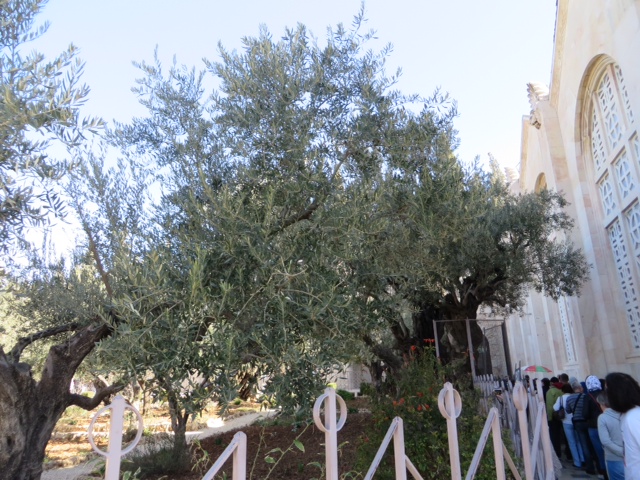
Ancient Olive Tree
“One of the ironies that has run through my mind since I got here is that Jerusalem the city whose name means "peace" has not really known peace. This picture is of a close up of the stones around Jerusalem's Zion Gate. It shows bullet holes from the 1947 war between the Zionists and the British.
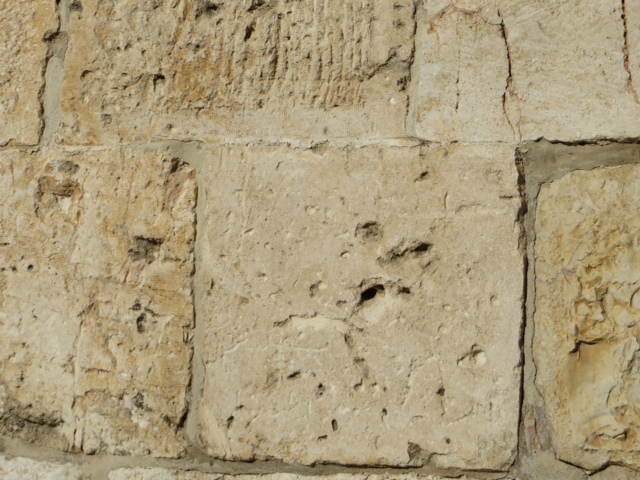
Remnants of War
“Two more pictures and I'll be through. This one is of David's Tomb. No one really knew where David was buried, but Herod, to win the Jews’ favor, decided this was as good a place as any to build a monument. Over it is the traditional site of the Upper Room—a tradition which is given strong scriptural support. (Look at Peter's Pentecost sermon, and see how he made reference to David being buried.) And, finally, here is one last look over the Holy City.”
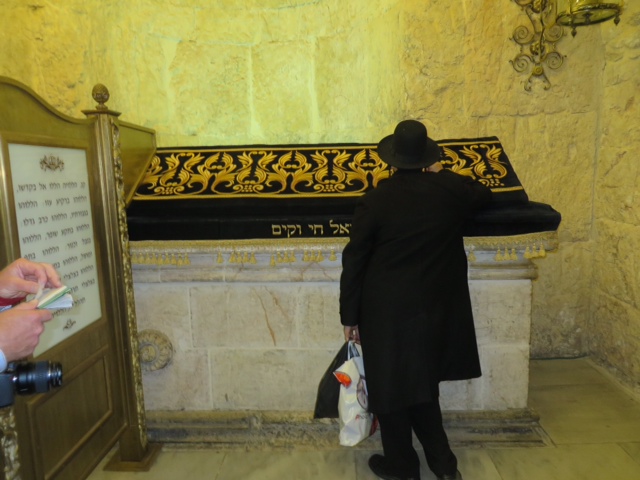
David's Tomb
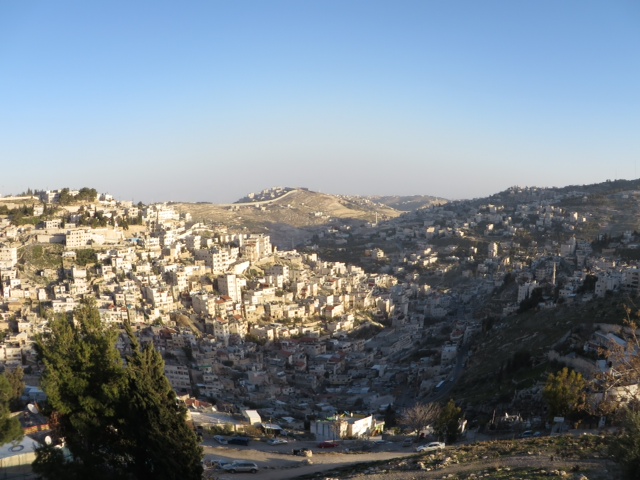
The Holy City
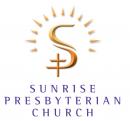
.jpg)
